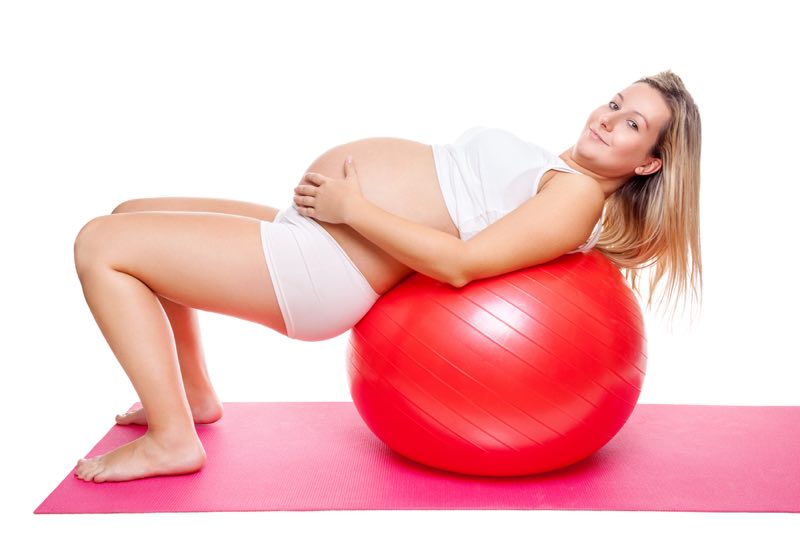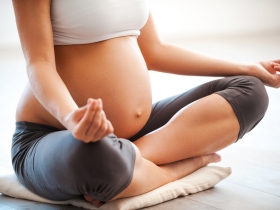Exercise for pregnant women - yoga, pilates and swimming
In the past, exercise during pregnancy was considered dangerous for both the foetus and the mother. Today, ivf experts agree that if a woman does not have a high risk pregnancy or has no other problems, an adequate level of exercise is desirable. But it always depends on how physically active the woman was before pregnancy. However, for healthy women, exercise during pregnancy is beneficial both physically and mentally. Properly chosen exercise will help relieve back and hip pain, reduce the risk of varicose veins, gestational diabetes, high blood pressure and relieve stress. Last but not least, exercise for pregnant women is also the best preparation for childbirth and the subsequent demanding period with a newborn baby.
What is suitable exercise during pregnancy
For both the pregnant woman and the foetus, any physical activity or movement that corresponds to the woman's physical condition, her previous sporting activity and which does not endanger the baby is good. If a woman has been active before pregnancy, she can continue this activity to a large extent after consulting a gynaecologist. On the contrary, expectant mothers who did not exercise at all before pregnancy should start exercising carefully and choose rather milder forms of activity. In general, regular exercise (about three times a week) is recommended rather than occasional activity of a high volume.
Exercises which slightly strengthen the abdominal muscles are good for pregnant women. It is also recommended to strengthen the muscles of the buttocks, limbs, back, chest and pelvic floor. All exercise should be performed with proper breathing in mind. It certainly never hurts to stretch your muscles slightly and take a walk. On the other hand, a woman should not force herself to exercise if she feels pain or does not feel well. When choosing exercise for pregnant women, it is advisable to consult a gynaecologist, midwife or personal trainer, who will recommend the most suitable special exercises for pregnant women.

Pilates and yoga for pregnant women
Gravi yoga and Pilates during pregnancy are probably the most popular forms of exercise in pregnancy. One reason is that this popular exercise form is tailored specifically for pregnancy, and the other is the fact that gravi yoga can be performed in various variations during all three trimesters. Both Pilates and yoga are ideal for strengthening the abdominal and pelvic floor muscles, which is key to a comfortable pregnancy and childbirth itself. Selected exercises can help with back pain or adjust blood circulation to prevent varicose veins.
Swimming and exercising in the water
Swimming and exercising in the water are other activities that are suitable for all mums in any trimester. The water lifts, so it relieves the pain of tired joints, and at the same time absorbs shock. Thanks to this, pregnant women can undertake exercises that would not be suitable on a solid surface. Swimming and exercise also strengthen the pelvic floor muscles. In addition, it has a beneficial effect on blood circulation without burdening the circulatory system.
Exercises with a ball
Exercise on a gymnastic ball helps pregnant women stay fit during pregnancy and prepare for childbirth. At the same time, it meets all the requirements regarding restrictions and requirements of exercise during pregnancy. The ball is especially suitable for stretching individual parts of the body, slight strengthening or for relaxation. Even when exercising on a ball, the pelvic floor muscles can be strengthened. In addition, it is said that swaying movements have a positive effect on the baby and evoke a feeling of satisfaction in them.
Gym
If a woman used to go to the gym regularly before becoming pregnant, she does not have to give this up during pregnancy. However, it is necessary to adjust the form of exercise and eliminate some exercises. Strong clenching of the abdomen, deep squats and forward bends, jumping and jogging or all of these exercises in hot and humid environments is not suitable. The exercise plan should be discussed with the pregnant woman's personal pregnancy trainer, gynaecologist or midwife.
When to exercise during pregnancy and when not
If a woman is healthy and does not have a high risk pregnancy, according to the recommendations of experts, she can always practice selected activity with regard to her health and the safety of the unborn baby. It is always a good idea to loosen up, stretch and warm up your muscles before exercising. For physical activities, a woman should choose comfortable and loose clothing and especially a suitable sports bra.
A pregnant woman should avoid physical activities that require jumps and sharp movements or a risk of falling or impact. For this reason, it is recommended to exercise on a flat, non-slip surface (such as a rug). Pregnant women should take longer breaks between exercise, watch their drinking regime and supplement their energy with a suitable diet after exercise.
Women who have health complications such as heart disease, asthma or diabetes should definitely not exercise. Exercise should also be omitted by women who have a weak cervix, a low placenta and are at risk of a preterm birth or miscarriage. If headaches, abdominal pain, dizziness, spotting or bleeding and other adverse physical manifestations occur during or after exercise, the woman should stop exercising.
Do you want to keep fit during pregnancy, but don't know how? Try our yoga classes for pregnant women led by an experienced midwife and yoga instructor.
This article is translated from Czech original to English language by Bobby Pacewicz.






